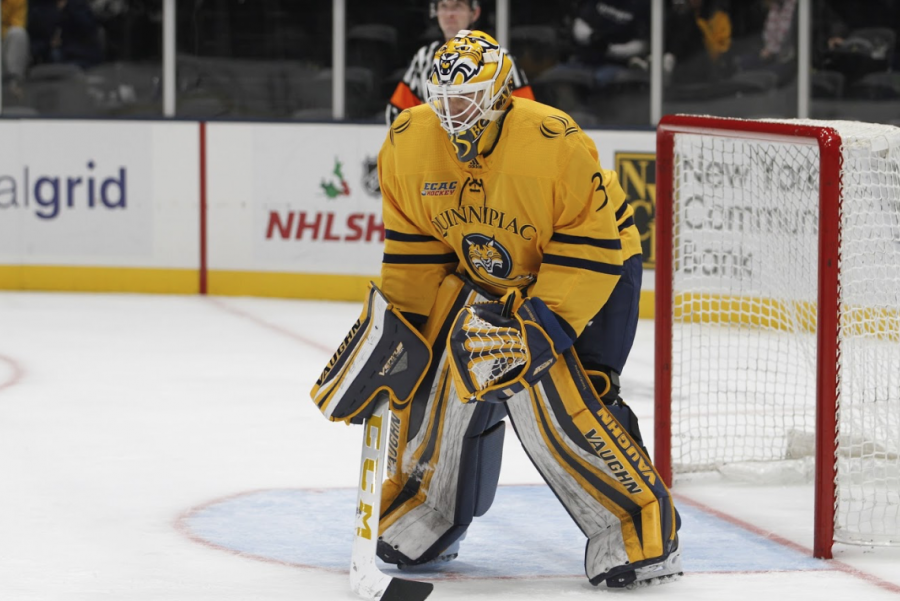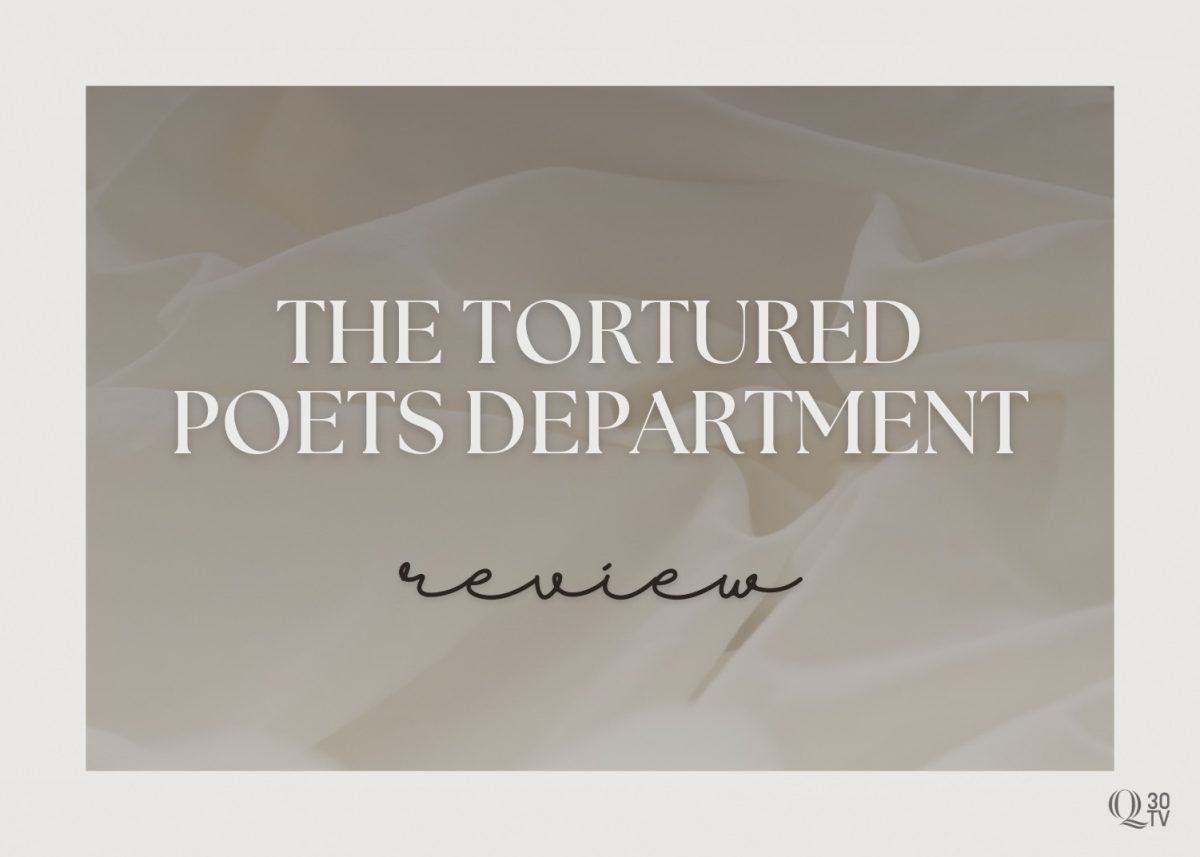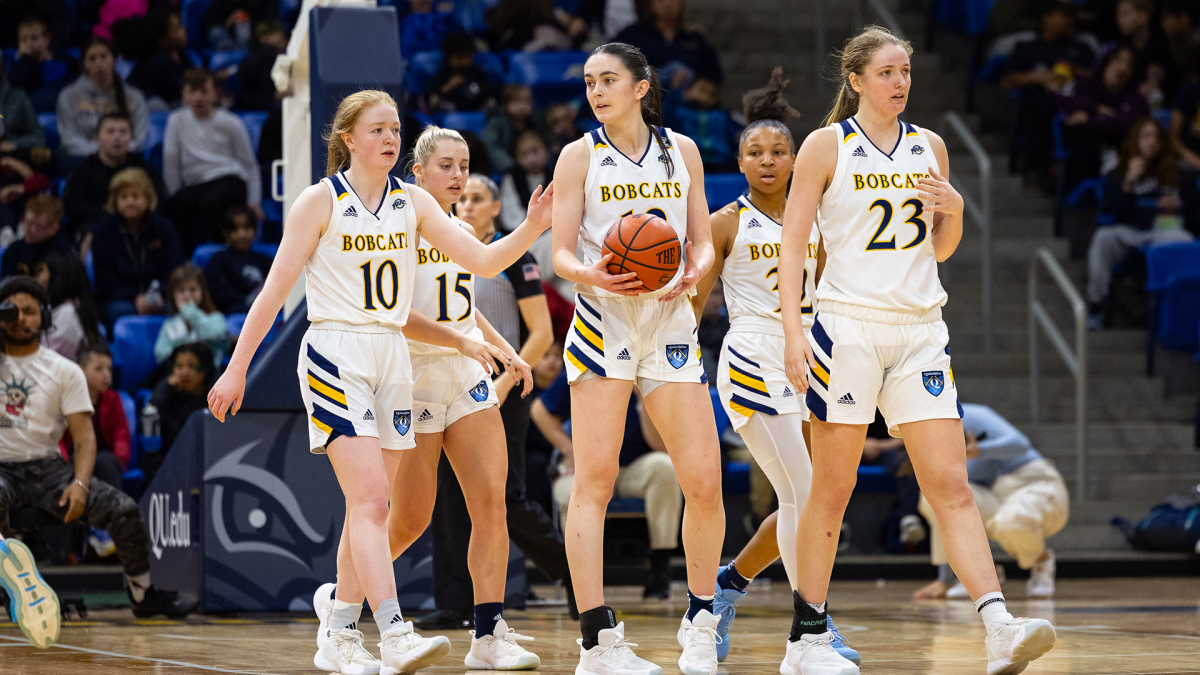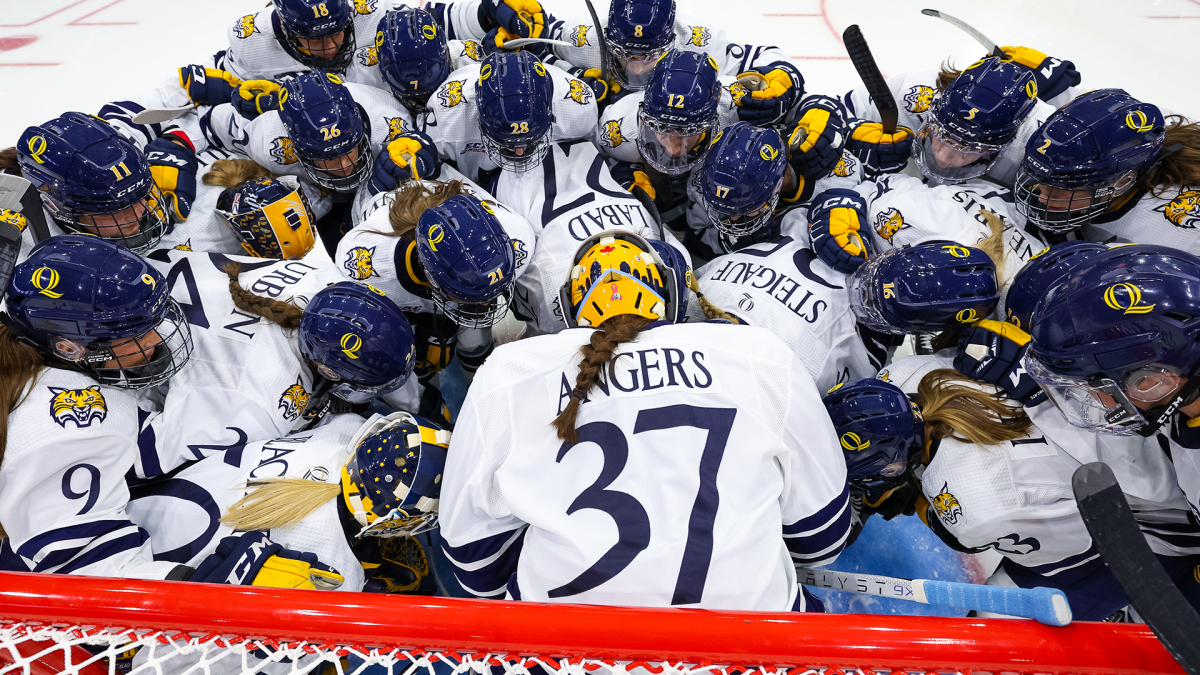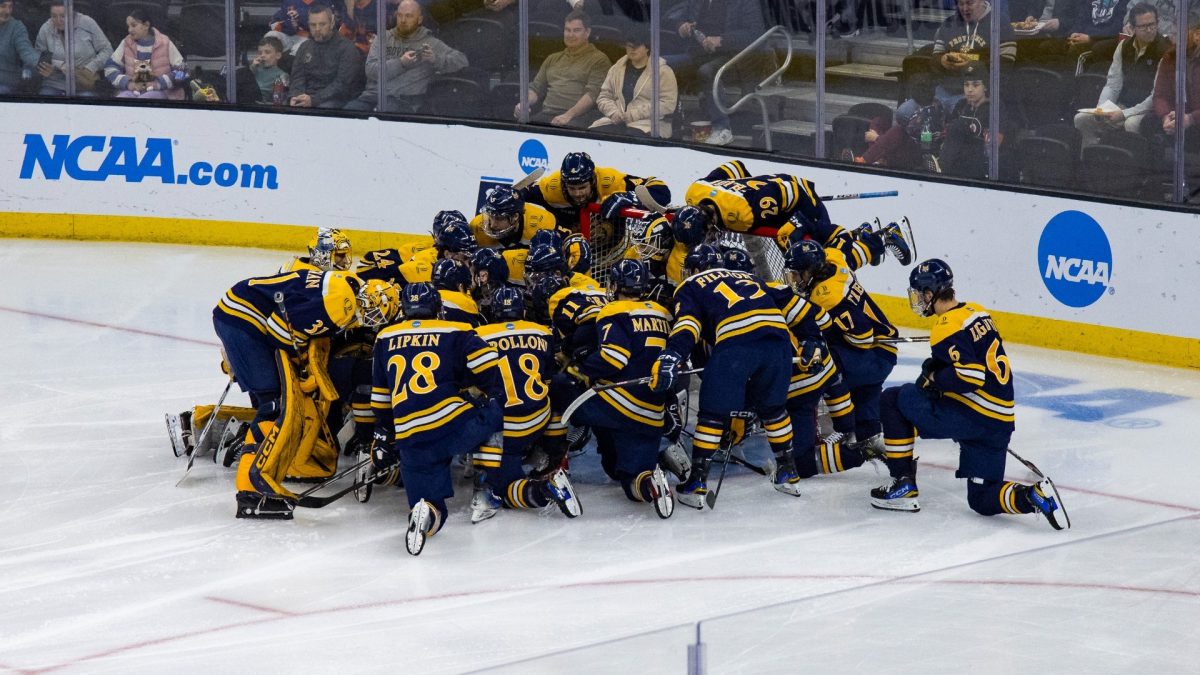Quinnipiac scores three on the power play to avenge loss to Dartmouth
January 12, 2019
Highlights:
The Quinnipiac men’s ice hockey team started 2019 with a lackluster one point weekend at home, losing to Colgate on Jan. 4 and tying Cornell on Jan. 5. The USCHO‘s sixth best team in the nation stayed in Hamden to face Dartmouth on Friday night, one of just four teams that has defeated Quinnipiac this season. The Bobcats fell behind 1-0, but three goals in the second period from only four shots on net gave them a lead they never looked back on. Quinnipiac picked up it’s first win of the new year, defeating Dartmouth 5-1.
Three of Quinnipiac’s five unanswered goals were scored on the power play. A fixture of this year’s Quinnipiac power play has been defenseman Chase Priskie who tied the game at 1-1 in the second period. He is tied for the most power-play goals in the NCAA (8) which has helped the Bobcats have the nations fourth best power play (28.24%).
While Priskie stars on Quinnipiac’s first power play unit, his teammate Alex Whelan gets a front row seat to see the Bobcats’ magic unfold before he hops on the ice for the second unit. Whelan sees Priskie’s goal scoring as a key that opens other doors on the power play.
“I think [Priskie scoring] opens up pretty much everyone else on the ice,” Whelan said. “I know every team watches Chase, so I think it’s huge.”
With the other team honing in on Priskie, the question of how the Bobcats will adjust arises. Whelan says that they’ll keep playing their game.
“I think it’s more of letting the other team stop us rather than adjusting the way we do things first,” he said. “If we see the other team is going to stop us, we have other options. We can go to our second option or our third option and they’re all great players.”
One of Quinnipiac’s other options was defenseman Peter DiLiberatore who netted his third goal this year and second while on the man up. The freshman’s goal was good for the game winner. He says his poise and puck management have helped him get ice time on the power play.
“I just try to do my job and have communication with my teammates,” DiLiberatore said about his goal. “The goalie was screened, he was kind of looking around the players so I just saw the lane was there, so I tried to get one on net and get it deflected but luckily it went in.”
“We want both units to be good,” head coach Rand Pecknold said. “That second unit with [DiLiberatore], they’ve been great. They’ve scored some big ones lately for us and obviously Odeen’s [Tufto] unit has been excellent.”
Having defenseman score on the power play has been a recent change for Quinnipiac’s power play. While the Bobcats have had a top power play in the country for most of the last decade, in past years they’ve had to rely on forwards scoring the goals. The last time the Bobcats went to the National Championship in 2016, they scored on 27.5% of their power play chances. Sam Anas, Travis St. Denis and Tim Clifton (all forwards) led the way with 10 power play goals apiece. That year, the defensemen combined for only four power-play goals. This year, through 21 games the defensemen have already combined for 13 power-play goals. Pecknold says it started with a tweak last season.
“We’ve been putting a lot of time and effort into it and obviously we have good players out there and we give them structure and then in the end you have to back off and let them make plays,” Pecknold said. “We made a switch at Christmas last year and that’s when we put three [defensemen] up in the first unit, so our power play up until Christmas a year ago was poor and then it was great the second half of the season. I think we’ll continue on with that.”
Quinnipiac faces Harvard Saturday night at Frank Perrotti Jr. Arena, a team it beat 5-3 on the road to start conference play on Nov. 2.
Postgame Press Conferences:
Rand Pecknold
Alex Whelan Peter Diliberatore


